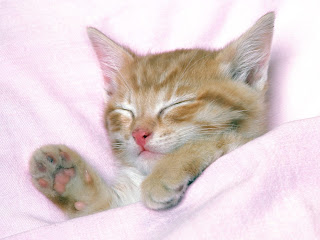General Info:
The domestic cat is a small,
usually furry, domesticated, and carnivorous mammal. It is often called the housecat
when kept as an indoor pet or simply the cat when there is no need to
distinguish it from other felids and felines. Cats are often valued by humans
for companionship and their ability to hunt vermin and household pests.
Cat senses fit a crepuscular and predatory ecological niche. Cats can hear
sounds too faint or too high in frequency for human ears, such as those made by
mice and other small game. They can see in near darkness. Like most other
mammals, cats have poorer color vision and a better sense of smell than humans.
Physique:
Domestic cats are similar in size to the other members of the genus Felis, typically weighing between
4–5 kg (8.8–11 lb). However, some breeds, such as the Maine Coon, can
occasionally exceed 11 kg (25 lb). Conversely, very small cats (less
than 1.8 kg (4.0 lb)) have been reported. The world record for the
largest cat is 21.3 kg (47 lb). The smallest adult cat ever
officially recorded weighed around 1.36 kg (3.0 lb). Feral cats tend
to be lighter as they have more limited access to food than house cats. In the Boston
area, the average feral adult male will scale 3.9 kg (8.6 lb) and
average feral female 3.3 kg (7.3 lb). Cats average about
23–25 cm (9–10 in) in height and 46 cm (18.1 in) in
head/body length (males being larger than females), with tails averaging
30 cm (11.8 in) in length.
Diet:
Cats hunt small prey, primarily birds and rodents, and are often used as a
form of pest control. Domestic cats select food based on its temperature, smell
and texture, strongly disliking chilled foods and responding most strongly to
moist foods rich in amino acids, which are similar to meat.
Distribution:
A genetic study in 2007 revealed that domestic cats are
descended from African wildcats 8000 BC, in the Middle East. According to Scientific American, cats are the
most popular pet in the world, and are now found almost every place where
people live.



















.jpg)























